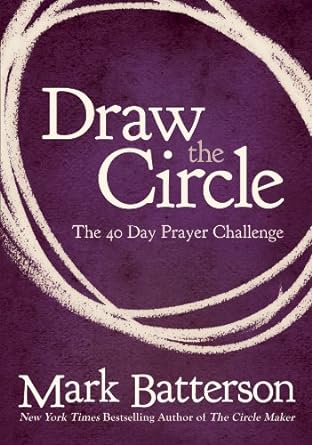
The Interpretation of Dreams
What are the most common dreams and why do we have them? What does a dream about death mean? What do dreams of swimming, failing, or flying symbolize? Until the beginning of the twentieth century, most people considered dreams unworthy of serious consideration. Sigmund Freud, however, had noticed that they formed an active part in the analysis of his patients, and he gradually came to believe that they represent struggles by the unconscious to resolve conflicts. Freud offers an incisive and enduringly relevant examination of dream psychology. Encompassing dozens of case histories and detailed analyses of actual dreams, this landmark work grants us unique insight into our sleeping experiences. 'The Interpretation of Dreams' is undoubtedly an important early work on the subject of dream analysis.
BEST DEALS
About the Author
Dr. Sigismund Freud (later changed to Sigmund) was a neurologist and the founder of psychoanalysis, who created an entirely new approach to the understanding of the human personality. He is regarded as one of the most influential—and controversial—minds of the 20th century. In 1873, Freud began to study medicine at the University of Vienna. After graduating, he worked at the Vienna General Hospital. He collaborated with Josef Breuer in treating hysteria by the recall of painful experiences under hypnosis. In 1885, Freud went to Paris as a student of the neurologist Jean Charcot. On his return to Vienna the following year, Freud set up in private practice, specialising in nervous and brain disorders. The same year he married Martha Bernays, with whom he had six children. Freud developed the theory that humans have an unconscious in which sexual and aggressive impulses are in perpetual conflict for supremacy with the defences against them. In 1897, he began an intensive analysis of himself. In 1900, his major work 'The Interpretation of Dreams' was published in which Freud analysed dreams in terms of unconscious desires and experiences. In 1902, Freud was appointed Professor of Neuropathology at the University of Vienna, a post he held until 1938. Although the medical establishment disagreed with many of his theories, a group of pupils and followers began to gather around Freud. In 1910, the International Psychoanalytic Association was founded with Carl Jung, a close associate of Freud's, as the president. Jung later broke with Freud and developed his own theories. After World War One, Freud spent less time in clinical observation and concentrated on the application of his theories to history, art, literature and anthropology. In 1923, he published 'The Ego and the Id', which suggested a new structural model of the mind, divided into the 'id, the 'ego' and the 'superego'. In 1933, the Nazis publicly burnt a number of Freud's books. In 1938, shortly after the Nazis annexed Austria, Freud left Vienna for London with his wife and daughter Anna. Freud had been diagnosed with cancer of the jaw in 1923, and underwent more than 30 operations. He died of cancer on 23 September 1939.
Read Sample
Chapter 1 : The Scientific Literature of Dream-Problems (Up to 1900)
In the following pages I shall demonstrate that there is a psychological technique which makes it possible to interpret dreams, and that on the application of this technique every dream will reveal itself as a psychological structure, full of significance, and one which may be assigned to a specific place in the psychic activities of the waking state. Further, I shall endeavour to elucidate the processes which underlie the strangeness and obscurity of dreams, and to deduce from these processes the nature of the psychic forces whose conflict or cooperation is responsible for our dreams. This done, my investigation will terminate, as it will have reached the point where the problem of the dream merges into more comprehensive problems, and to solve these we must have recourse to material of a different kind.
I shall begin by giving a short account of the views of earlier writers on this subject, and of the status of the dream-problem in contemporary science; since in the course of this treatise I shall not often have occasion to refer to either. In spite of thousands of years of endeavour, little progress has been made in the scientific understanding of dreams. This fact has been so universally acknowledged by previous writers on the subject that it seems hardly necessary to quote individual opinions. The reader will find, in the works listed at the end of this work, many stimulating observations, and plenty of interesting material relating to our subject, but little or nothing that concerns the true nature of the dream, or that solves definitely any of its enigmas. The educated layman, of course, knows even less of the matter.
The conception of the dream that was held in prehistoric ages by primitive peoples, and the influence which it may have exerted on the formation of their conceptions of the universe, and of the soul, is a theme of such great interest that it is only with reluctance that I refrain from dealing with it in these pages. I will refer the reader to the well-known works of Sir John Lubbock (Lord Avebury), Herbert Spencer, E. B. Tylor, and other writers; I will only add that we shall not realize the importance of these problems and speculations until we have completed the task of dream-interpretation that lies before us.
A reminiscence of the concept of the dream that was held in primitive times seems to underlie the evaluation of the dream which was current among the peoples of classical antiquity. They took it for granted that dreams were related to the world of the supernatural beings in whom they believed, and that they brought inspirations from the gods and demons. Moreover, it appeared to them that dreams must serve a special purpose in respect of the dreamer; that, as a rule, they predicted the future. The extraordinary variations in the content of dreams, and in the impressions which they produced on the dreamer, made it, of course, very difficult to formulate a coherent conception of them, and necessitated manifold differentiations and group-formations, according to their value and reliability. The valuation of dreams by the individual philosophers of antiquity naturally depended on the importance which they were prepared to attribute to manticism in general.
In the two works of Aristotle in which there is mention of dreams, they are already regarded as constituting a problem of psychology. We are told that the dream is not god-sent, that it is not of divine but of demonic origin. For nature is really demonic, not divine; that is to say, the dream is not a supernatural revelation, but is subject to the laws of the human spirit, which has, of course, a kinship with the divine. The dream is defined as the psychic activity of the sleeper, inasmuch as he is asleep. Aristotle was acquainted with some of the characteristics of the dream-life; for example, he knew that a dream converts the slight sensations perceived in sleep into intense sensations (“one imagines that one is walking through fire, and feels hot, if this or that part of the body becomes only quite slightly warm”), which led him to conclude that dreams might easily betray to the physician the first indications of an incipient physical change which escaped observation during the day.
As has been said, those writers of antiquity who preceded Aristotle did not regard the dream as a product of the dreaming psyche, but as an inspiration of divine origin, and in ancient times the two opposing tendencies which we shall find throughout the ages in respect of the evaluation of the dream-life were already perceptible. The ancients distinguished between the true and valuable dreams which were sent to the dreamer as warnings, or to foretell future events, and the vain, fraudulent, and empty dreams whose object was to misguide him or lead him to destruction.
Gruppe speaks of such a classification of dreams, citing Macrobius and Artemidorus: “Dreams were divided into two classes; the first class was believed to be influenced only by the present (or the past), and was unimportant in respect of the future; it included the enuknia (insomnia), which directly reproduce a given idea or its opposite; e.g., hunger or its satiation; and the phantasmata, which elaborate the given idea phantastically, as e.g. the nightmare, ephialtes. The second class of dreams, on the other hand, was determinative of the future. To this belonged:
1. Direct prophecies received in the dream (chrematismos, oraculum);
2. The foretelling of a future event (orama, visio);
3. The symbolic dream, which requires interpretation (oneiros, somnium.)
This theory survived for many centuries.”
Connected with these varying estimations of the dream was the problem of “dream-interpretation.” Dreams in general were expected to yield important solutions, but not every dream was immediately understood, and it was impossible to be sure that a certain incomprehensible dream did not really foretell something of importance, so that an effort was made to replace the incomprehensible content of the dream by something that should be at once comprehensible and significant. In later antiquity Artemidorus of Daldis was regarded as the greatest authority on dream-interpretation. His comprehensive works must serve to compensate us for the lost works of a similar nature. The pre-scientific conception of the dream which obtained among the ancients was, of course, in perfect keeping with their general conception of the universe, which was accustomed to project as an external reality that which possessed reality only in the life of the psyche. Further, it accounted for the main impression made upon the waking life by the morning memory of the dream; for in this memory the dream, as compared with the rest of the psychic content, seems to be something alien, coming, as it were, from another world. It would be an error to suppose that theory of the supernatural origin of dreams lacks followers even in our own times; for quite apart from pietistic and mystical writers—who cling, as they are perfectly justified in doing, to the remnants of the once predominant realm of the supernatural until these remnants have been swept away by scientific explanation—we not infrequently find that quite intelligent persons, who in other respects are averse from anything of a romantic nature, go so far as to base their religious belief in the existence and co-operation of superhuman spiritual powers on the inexplicable nature of the phenomena of dreams (Haffner). The validity ascribed to the dream-life by certain schools of philosophy—for example, by the school of Schelling—is a distinct reminiscence of the undisputed belief in the divinity of dreams which prevailed in antiquity; and for some thinkers the mantic or prophetic power of dreams is still a subject of debate. This is due to the fact that the explanations attempted by psychology are too inadequate to cope with the accumulated material, however strongly the scientific thinker may feel that such superstitious doctrines should be repudiated.
To write strongly the history of our scientific knowledge of the dream-problem is extremely difficult, because, valuable though this knowledge may be in certain respects, no real progress in a definite direction is as yet discernible. No real foundation of verified results has hitherto been established on which future investigators might continue to build. Every new author approaches the same problems afresh, and from the very beginning. If I were to enumerate such authors in chronological order, giving a survey of the opinions which each has held concerning the problems of the dream, I should be quite unable to draw a clear and complete picture of the present state of our knowledge on the subject. I have therefore preferred to base my method of treatment on themes rather than on authors, and in attempting the solution of each problem of the dream I shall cite the material found in the literature of the subject.
But as I have not succeeded in mastering the whole of this literature—for it is widely dispersed, and interwoven with the literature of other subjects—I must ask my readers to rest content with my survey as it stands, provided that no fundamental fact or important point of view has been overlooked.
Until recently most authors have been inclined to deal with the subjects of sleep and dreams in conjunction, and together with these they have commonly dealt with analogous conditions of a psycho-pathological nature, and other dream-like phenomena, such as hallucinations, visions, etc. In recent works, on the other hand, there has been a tendency to keep more closely to the theme, and to consider, as a special subject, the separate problems of the dream-life. In this change I should like to perceive an expression of the growing conviction that enlightenment and agreement in such obscure matters may be attained only by a series of detailed investigations. Such a detailed investigation, and one of a special psychological nature, is expounded in these pages. I have had little occasion to concern myself with the problem of sleep, as this is essentially a physiological problem, although the changes in the functional determination of the psychic apparatus should be included in a description of the sleeping state. The literature of sleep will therefore not be considered here.
A scientific interest in the phenomena of dreams as such leads us to propound the following problems, which to a certain extent, interdependent, merge into one another.
A. The Relation of the Dream to the Waking State
The naive judgment of the dreamer on waking assumes that the dream—even if it does not come from another world—has at all events transported the dreamer into another world. The old physiologist, Burdach, to whom we are indebted for a careful and discriminating description of the phenomena of dreams, expressed this conviction in a frequently quoted passage (p. 474): “The waking life, with its trials and joys, its pleasures and pains, is never repeated; on the contrary, the dream aims at relieving us of these. Even when our whole mind is filled with one subject, when our hearts are rent by bitter grief, or when some task has been taxing our mental capacity to the utmost, the dream either gives us something entirely alien, or it selects for its combinations only a few elements of reality; or it merely enters into the key of our mood, and symbolizes reality.” J. H. Fichte (I. 541) speaks in precisely the same sense of supplementary dreams, calling them one of the secret, self-healing benefits of the psyche. L. Strumpell expresses himself to the same effect in his Natur und Entstehung der Traume, a study which is deservedly held in high esteem. “He who dreams turns his back upon the world of waking consciousness” (p. 16); “In the dream the memory of the orderly content of waking consciousness and its normal behaviour is almost entirely lost” (p. 17); “The almost complete and unencumbered isolation of the psyche in the dream from the regular normal content and course of the waking state...” (p. 19).
Yet the overwhelming majority of writers on the subject have adopted the contrary view of the relation of the dream to waking life. Thus Haffner (p. 19): “To begin with, the dream continues the waking life. Our dreams always connect themselves with such ideas as have shortly before been present in our consciousness. Careful examination will nearly always detect a thread by which the dream has linked itself to the experiences of the previous day.” Weygandt (p. 6) flatly contradicts the statement of Burdach. “For it may often be observed, apparently indeed in the great majority of dreams, that they lead us directly back into everyday life, instead of releasing us from it.” Maury (p. 56) expresses the same idea in a concise formula: “Nous revons de ce que nous avons vu, dit, desire, ou fait.” Jessen, in his Psychologie, published in 1855 (p. 530), is rather more explicit: “The content of dreams is always more or less determined by the personality, the age, sex, station in life, education and habits, and by the events and experiences of the whole past life of the individual.”
The philosopher, I. G. E. Maas, adopts the most unequivocal attitude in respect of this question (Uber die Leidenschaften, 1805): “Experience corroborates our assertion that we dream most frequently of those things toward which our warmest passions are directed. This shows us that our passions must influence the generation of our dreams. The ambitious man dreams of the laurels which he has won (perhaps only in imagination), or has still to win, while the lover occupies himself, in his dreams, with the object of his dearest hopes... All the sensual desires and loathing’s which slumber in the heart, if they are stimulated by any cause, may combine with other ideas and give rise to a dream; or these ideas may mingle in an already existing dream.”
The ancients entertained the same idea concerning the dependence of the dream-content on life. I will quote Radestock (p. 139): “When Xerxes, before his expedition against Greece, was dissuaded from his resolution by good counsel, but was again and again incited by dreams to undertake it, one of the old, rational dream-interpreters of the Persians, Artabanus, told him, and very appropriately, that dream-images for the most part contain that of which one has been thinking in the waking state.”
In the didactic poem of Lucretius, On the Nature of Things (IV. 962), there occurs this passage:
“Et quo quisque fere studio devinctus adhaeret, aut quibus in rebus multum sumus ante morati atque in ea ratione fuit contenta magis mens, in somnis eadem plerumque videmur obire; causidici causas agere et componere leges, induperatores pugnare ac proelia obire,”... etc., etc. Cicero (De Divinatione, II. LXVII) says, in a similar strain, as does also Maury many centuries later: “Maximeque ‘reliquiae’ rerum earum moventur in animis et agitantur, de quibus vigilantes aut cogitavimus aut egimus.”
The contradiction between these two views concerning the relation between dream life and waking life seems indeed irresolvable. Here we may usefully cite the opinion of F. W. Hildebrandt (1875), who held that on the whole the peculiarities of the dream can only be described as “a series of contrasts which apparently amount to contradictions” (p. 8). “The first of these contrasts is formed by the strict isolation or seclusion of the dream from true and actual life on the one hand, and on the other hand by the continuous encroachment of the one upon the other, and the constant dependence of the one upon the other. The dream is something absolutely divorced from the reality experienced during the waking state; one may call it an existence hermetically sealed up and insulated from real life by an unbridgeable chasm. It frees us from reality, blots out the normal recollection of reality, and sets us in another world and a totally different life, which fundamentally has nothing in common with real life...” Hildebrandt then asserts that in falling asleep our whole being, with its forms of existence, disappears “as through an invisible trapdoor.” In one’s dream one is perhaps making a voyage to St. Helena in order to offer the imprisoned Napoleon an exquisite vintage of Moselle. One is most affably received by the ex-emperor, and one feels almost sorry when, on waking, the interesting illusion is destroyed. But let us now compare the situation existing in the dream with the actual reality. The dreamer has never been a wine-merchant, and has no desire to become one. He has never made a sea-voyage, and St. Helena is the last place in the world that he would choose as the destination of such a voyage. The dreamer feels no sympathy for Napoleon, but on the contrary a strong patriotic aversion. And lastly, the dreamer was not yet among the living when Napoleon died on the island of St. Helena; so that it was beyond the realms of possibility that he should have had any personal relations with Napoleon. The dream-experience thus appears as something entirely foreign, interpolated between two mutually related and successive periods of time.
“Nevertheless,” continues Hildebrandt, “the apparent contrary is just as true and correct. I believe that side by side with this seclusion and insulation there may still exist the most intimate interrelation. We may therefore justly say: Whatever the dream may offer us, it derives its material from reality, and from the psychic life centered upon this reality. However extraordinary the dream may seem, it can never detach itself from the real world, and its most sublime as well as its most ridiculous constructions must always borrow their elementary material either from that which our eyes have beheld in the outer world, or from that which has already found a place somewhere in our waking thoughts; in other words, it must be taken from that which we have already experienced, either objectively or subjectively.”
B. The Material of Dreams—Memory in Dreams
That all the material composing the content of a dream is somehow derived from experience, that it is reproduced or remembered in the dream—this at least may be accepted as an incontestable fact. Yet it would be wrong to assume that such a connection between the dream-content and reality will be easily obvious from a comparison between the two. On the contrary, the connection must be carefully sought, and in quite a number of cases it may for a long while elude discovery. The reason for this is to be found in a number of peculiarities evinced by the faculty of memory in dreams; which peculiarities, though generally observed, have hitherto defied explanation. It will be worth our while to examine these characteristics exhaustively.
To begin with, it happens that certain material appears in the dream-content which cannot be subsequently recognized, in the waking state, as being part of one’s knowledge and experience. One remembers clearly enough having dreamed of the thing in question, but one cannot recall the actual experience or the time of its occurrence. The dreamer is therefore in the dark as to the source which the dream has tapped, and is even tempted to believe in an independent productive activity on the part of the dream, until, often long afterwards, a fresh episode restores the memory of that former experience, which had been given up for lost, and so reveals the source of the dream. One is therefore forced to admit that in the dream something was known and remembered that cannot be remembered in the waking state.
Delboeuf relates from his own experience an especially impressive example of this kind. He saw in his dream the courtyard of his house covered with snow, and found there two little lizards, half-frozen and buried in the snow. Being a lover of animals he picked them up, warmed them, and put them back into the hole in the wall which was reserved especially for them. He also gave them a few fronds of a little fern which was growing on the wall, and of which he knew they were very fond. In the dream he knew the name of the plant; Asplenium ruta muralis. The dream continued returning after a digression to the lizards, and to his astonishment Delboeuf saw two other little lizards falling upon what was left of the ferns. On turning his eyes to the open fields he saw a fifth and a sixth lizard making for the hole in the wall, and finally the whole road was covered by a procession of lizards, all wandering in the same direction.
In his waking state Delboeuf knew only a few Latin names of plants, and nothing of any Asplenium. To his great surprise he discovered that a fern of this name did actually exist, and that the correct name was Asplenium ruta muraria, which the dream had slightly distorted. An accidental coincidence was of course inconceivable; yet where he got his knowledge of the name Asplenium in the dream remained a mystery to him.
The dream occurred in 1862. Sixteen years later, while at the house of one of his friends, the philosopher noticed a small album containing dried plants, such as are sold as souvenirs to visitors in many parts of Switzerland. A sudden recollection came to him: he opened the herbarium, discovered therein the Asplenium of his dream, and recognized his own handwriting in the accompanying Latin name. The connection could now be traced. In 1860, two years before the date of the lizard dream, one of his friend’s sisters, while on her wedding-journey, had paid a visit to Delboeuf. She had with her at the time this very album, which was intended for her brother, and Delboeuf had taken the trouble to write, at the dictation of a botanist, the Latin name under each of the dried plants.
The same good fortune which gave this example its unusual value enabled Delboeuf to trace yet another portion of this dream to its forgotten source. One day in 1877 he came upon an old volume of an illustrated periodical, in which he found the whole procession of lizards pictured, just as he had dreamt of it in 1862. The volume bore the date 1861, and Delboeuf remembered that he had subscribed to the journal since its first appearance.
That dreams have at their disposal recollections which are inaccessible to the waking state is such a remarkable and theoretically important fact that I should like to draw attention to the point by recording yet other hypermnesic dreams. Maury relates that for some time the word Mussidan used to occur to him during the day. He knew it to be the name of a French city, but that was all. One night he dreamed of a conversation with a certain person, who told him that she came from Mussidan, and, in answer to his question as to where the city was, she replied: “Mussidan is the principal town of a district in the department of Dordogne.” On waking, Maury gave no credence to the information received in his dream; but the gazetteer showed it to be perfectly correct. In this case the superior knowledge of the dreamer was confirmed, but it was not possible to trace the forgotten source of this knowledge.
Jessen (p. 55) refers to a very similar incident, the period of which is more remote. “Among others we may here mention the dream of the elder Scaliger (Henning’s, l.c., p. 300), who wrote a poem in praise of the famous men of Verona, and to whom a man named Brugnolus appeared in a dream, complaining that he had been neglected. Though Scaliger could not remember that he had heard of the man, he wrote some verses in his honour, and his son learned subsequently that a certain Brugnolus had at one time been famed in Verona as a critic.”
A hypermnesic dream, especially remarkable for the fact that a memory not at first recalled was afterwards recognized in a dream which followed the first, is narrated by the Marquis d’Hervey de St. Denis: “I once dreamed of a young woman with fair golden hair, whom I saw chatting with my sister as she showed her a piece of embroidery. In my dream she seemed familiar to me; I thought, indeed, that I had seen her repeatedly. After waking, her face was still quite vividly before me, but I was absolutely unable to recognize it. I fell asleep again; the dream-picture repeated itself. In this new dream I addressed the golden-haired lady and asked her whether I had not had the pleasure of meeting her somewhere. ‘Of course,’ she replied; ‘don’t you remember the bathing-place at Pornic?’ Thereupon I awoke, and I was then able to recall with certainty and in detail the incidents with which this charming dream-face was connected.”
The same author recorded that a musician of his acquaintance once heard in a dream a melody which was absolutely new to him. Not until many years later did he find it in an old collection of musical compositions, though still he could not remember ever having seen it before.
I believe that Myers has published a whole collection of such hypermnesic dreams in the Proceedings of the Society for Psychical Research, but these, unfortunately, are inaccessible to me. I think everyone who occupies himself with dreams will recognize, as a very common phenomenon, the fact that a dream will give proof of the knowledge and recollection of matters of which the dreamer, in his waking state, did not imagine himself to be cognizant. In my analytic investigations of nervous patients, of which I shall speak later, I find that it happens many times every week that I am able to convince them, from their dreams, that they are perfectly well acquainted with quotations, obscene expressions, etc., and make use of them in their dreams, although they have forgotten them in their waking state. I shall here cite an innocent example of dream-hypermnesia, because it was easy to trace the source of the knowledge which was accessible only in the dream.
A patient dreamed amongst other things (in a rather long dream) that he ordered a kontuszowka in a cafe, and after telling me this he asked me what it could be, as he had never heard the name before. I was able to tell him that kontuszowka was a Polish liqueur, which he could not have invented in his dream, as the name had long been familiar to me from the advertisements. At first the patient would not believe me, but some days later, after he had allowed his dream of the cafe to become a reality, he noticed the name on a signboard at a street corner which for some months he had been passing at least twice a day.
I have learned from my own dreams how largely the discovery of the origin of individual dream-elements may be dependent on chance. Thus, for some years before I had thought of writing this book, I was haunted by the picture of a church tower of fairly simple construction, which I could not remember ever having seen. I then suddenly recognized it, with absolute certainty, at a small station between Salzburg and Reichenhall. This was in the late nineties, and the first time I had travelled over this route was in 1886. In later years, when I was already busily engaged in the study of dreams, I was quite annoyed by the frequent recurrence of the dream-image of a certain peculiar locality. I saw, in definite orientation to my own person—on my left—a dark space in which a number of grotesque sandstone figures stood out. A glimmering recollection, which I did not quite believe, told me that it was the entrance to a beer-cellar; but I could explain neither the meaning nor the origin of this dream-picture. In 1907 I happened to go to Padua, which, to my regret, I had been unable to visit since 1895. My first visit to this beautiful university city had been unsatisfactory. I had been unable to see Giotto’s frescoes in the church of the Madonna dell’ Arena: I set out for the church, but turned back on being informed that it was closed for the day. On my second visit, twelve years later, I thought I would compensate myself for this disappointment, and before doing anything else I set out for Madonna dell’ Arena. In the street leading to it, on my left, probably at the spot where I had turned back in 1895, I discovered the place, with its sandstone figures, which I had so often seen in my dream. It was, in fact, the entrance to a restaurant garden.
One of the sources from which dreams draw material for reproduction—material of which some part is not recalled or utilized in our waking thoughts—is to be found in childhood. Here I will cite only a few of the authors who have observed and emphasized this fact:
Hildebrandt (p. 23): “It has already been expressly admitted that a dream sometimes brings back to the mind, with a wonderful power of reproduction, remote and even forgotten experiences from the earliest periods of one’s life.”












